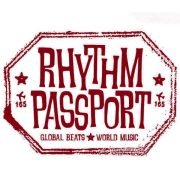The Grit Orchestra was an unusual treat for the WOMAD 2016 audience on the Open Air stage on Friday afternoon. The story of how this orchestra came about is complicated. Grit (released on the Real World label in 2003) was the last album of the hugely influential Scottish musician Martyn Bennett, who died in 2005. In the late stages of his illness he could no longer play his bagpipes or fiddle. Instead he used samples to produce one of the most moving recordings of its era. Ten years later enterprising violinist Greg Lawson had the idea of realising this music in a ‘live’ form as a tribute to his friend. He replaced the samples with a host of traditional Scottish musicians, storytellers and singers as well as jazz and classical players. And so The Grit Orchestra came into being.
We talked to Greg backstage after a moving performance to discover more about his process in creating this new, more progressive kind of orchestra.
Tell us a bit about Martyn Bennett for those who are unfamiliar with his music.
Martyn died eleven years ago. He was – what was that Bob Dylan phrase? – a ‘musical expeditionary’, but with a difference in that he really respected his past. But he saw no reason why he couldn’t express his present – where he was. And in the terms of tradition I think he resented that whole thing where tradition gets taken as a black and white photograph that everyone has to refer to, fixed in time like a fly in amber. So he started to use the language of his contemporary music, which was drum’n’bass. It was the ‘90s, a big dance music scene, and I think he had no problem putting dance music with Gaelic songs and Scottish folk music because dance is as much a normal thing as expressing yourself with your voice.
What is special about the album Grit?
Yes, so eventually he did Grit – it was his final album. He was dying of cancer of the lymphatic system, so that makes it more poignant. Also he couldn’t play his instruments. So his musical mind had to rely on his production skills, which were amazing. What he did was work the canvas of the mixing desk like an orchestral canvas. It’s all about polyphony and counterpoint. It’s not about harmonic counterpoint, but a kind of conversational counterpoint. But all of these things are orchestral in concept. And so the first time I heard Grit I thought “He’s moved on. He’s explored his folk traditions, he’s explored jazz, he’s explored classical music, he’s learned all these things and he’s taken his form into a whole new territory – and yet it’s connected to the past”. Most people when they take their form forwards they leave the past behind, and that’s why I think it doesn’t work, quite often. He just made a statement, which in itself was a beautiful counterpoint in time. But then he died, and I missed him. I suppose I thought that you don’t spend enough time with the people you love, and then they go.
How did you come to take up the cause of realising his music in the form of an orchestra, and why did you choose Grit?
I guess I chose Grit because it was the album that had the biggest landscape, and the one that has the biggest narrative that is a serious narrative. You know, for me, the orchestra is an instrument. I’m an orchestral musician, amongst other forms of music. I also play in orchestras, which is basically a 19th century concept that goes far further back, but it’s an evolved instrument in the classical form and it had three models that we use today – the chamber orchestra, the opera orchestra and the symphony orchestra – and it hasn’t changed since that time. It’s a concept of building a large body of instruments in carefully patterned groups that have a resonant timbre together, that when they all speak together it’s homogenous. You can do that with all kinds of groups of instruments.
So I listened to Grit and I thought, “well that’s orchestral! It’s not classical orchestral, but it’s orchestral, so I need to build an orchestra that would represent all those different forms”. So there are jazz musicians and there are folk musicians and classical musicians, and they’re in equal numbers. The percussion section is a complete division of the three. There’s a folk drummer, a free improv drummer and a classical percussionist, and each section [of the orchestra] is designed like that. I took out the wind section from the classical orchestra and replaced it with bagpipes and whistles, and low reeds – saxophones and bass clarinets – and you can have this incredible counterpoint language with all those timbres. It knows how to swing, it knows how to groove, it knows how to play a tune. The one question was, would it know how to play together? It goes in such different directions. My entire life I’ve believed that music is often too delineated by other people – not by musicians – but eventually it also becomes separated by musicians.
But the truth of music is obvious. It’s the universal language. And if it’s universal, that means that musicians are all the same. We all look at the world in the same way, just with a different accent. That’s the only difference. And I have always wanted to get musicians from different forms to come together. It’s been the biggest thing in my life really. And the orchestra had to made like that.


